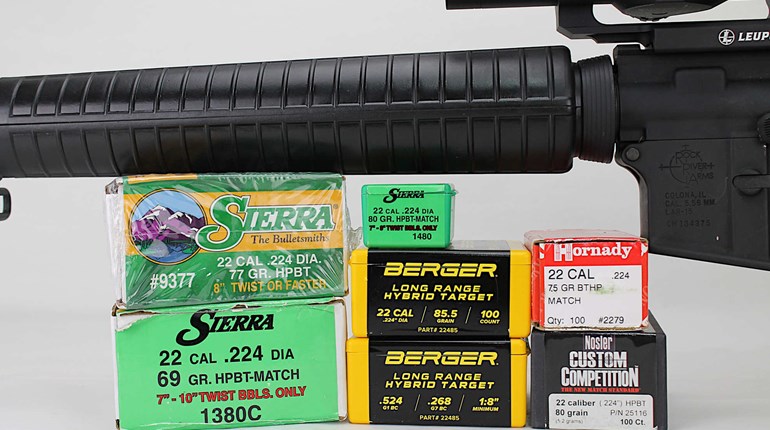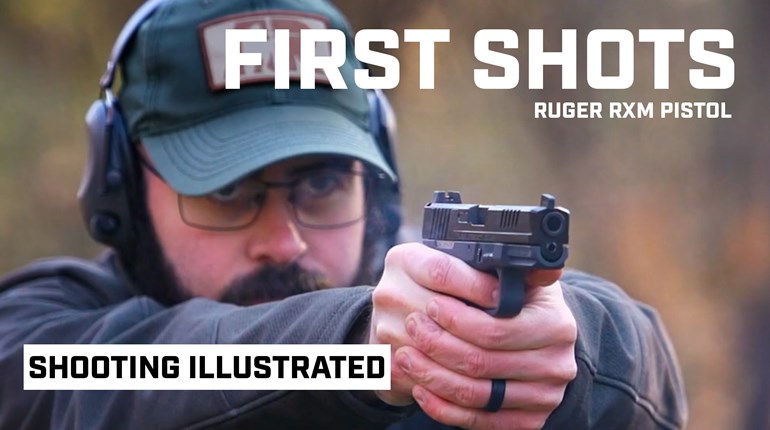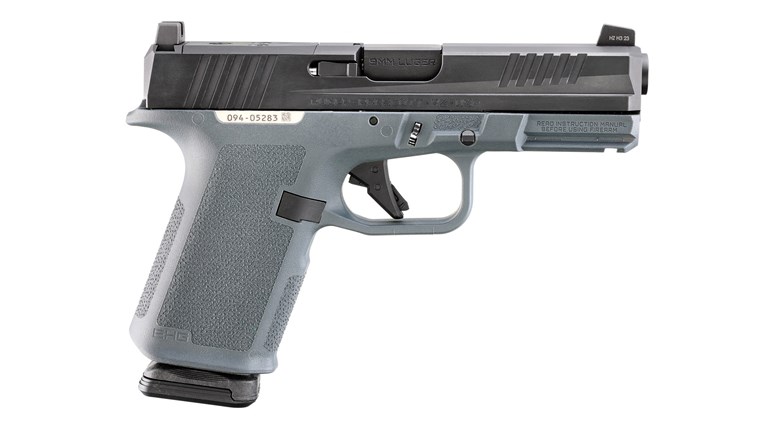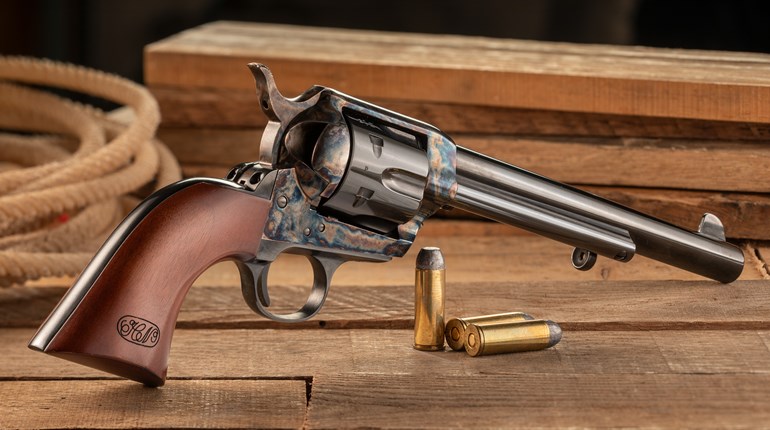
These pages make no secret of our admiration for the modern sporting rifle. Better known as the AR, it’s a sound nominee as the most developed and versatile rifle ever designed. As the M16, it was a fine long arm when it “came home” with Vietnam veterans, who, like their predecessors from World War II and Korea, thoroughly “civilized” their rifle as an earlier generation or two had done with the M1 Garand and .30-06 Springfield.
Skipping forward 50-plus years, American shooters can now find an AR suited to almost any purpose. Rimfire and pistol-caliber versions (and conversions) are an unfiltered joy—great introductory firearms to be sure, but also capable of real work in other capacities. In longer actions or up-powered cartridges—the original, you may recall, was chambered in 7.62x51 mm NATO/.308 Win.—they are finding increasing use afield as well: Modern optics mount with ease, and an ever-burgeoning variety of calibers put good inherent accuracy to work on all but the largest of North American game.The Magpul Offset PROs disappear when not in use. When they reappear, so do really good hits.
All that said, there remain many reasons to have an AR in the original caliber—.223 Rem. (or the slightly more powerful 5.56x45 mm NATO). Light recoiling, relatively economical and capable of superb accuracy, the only knock of substance is limited application for hunting (see July’s “Exercise Your Freedom” for an excellent cure). But if you want to get a long way down the road to becoming a thoroughly competent rifleman—or woman—Eugene Stoner’s magnum opus is hard to beat.
Which brings you to a problem if you decide to head down the MSR/AR road: The pattern is so refined, so widely implemented, that literally thousands of good options now exist. Indeed, there are tens of thousands if you consider major fitments beyond the basic rifle.
We suggest a shortcut: To avoid the dreaded “analysis paralysis,” take a serious, serious look at the FN15 Sporting before you, ah, pull the trigger. FN posits this as an AR “designed for competition,” but—spoiler alert!—this is a splendidly versatile rifle that will serve many shooters well.
At the heart of our sample was a nicely fit upper/lower pair. If you are new to this terminology, here’s a little clarification. The AR is a two-piece, forged aluminum rifle, connected by two pins. The “lower” integrates trigger, loading and buttstock functionality, while the “upper” marries bolt, chamber, barrel and sights/sight mounts. For the most part, extremely precise and repeatable fit of the upper and lower is a hallmark of current ARs, and our Sporting was just right; solid enough to engender confidence, not so tight as to initiate muffled—or any other sort of—cursing when we wanted inside.
The test rifle had FN’s heavy profile, 18-inch, hammer-forged barrel with a 1-in-8 twist. Whether this is outright manipulation or not, we couldn’t say, but we will fess up just the same: It’s our favorite. We suspect FN isn’t actually reading our email though, as this is the standard Sporting configuration.
Our admiration stems from a combination of factors. The twist rate is fast enough to stabilize heavy bullets (to 80 grains), but not so fast that barrel life shortens due to having more twist than really needed. Also, lighter (read “less expensive”) projectiles still shoot well. And while we acknowledge the wisdom of the “lightest possible rifle that gets the job done,” we think the emphasis needs to be on “gets the job done,” not “lightest.” Light-nosed rifles always “hunt” in our hands, while balanced, or even slightly nose-heavy rifles seem to steady up noticeably better. If rested, of course, this isn’t nearly as much of a factor. In the end, you’ll need to decide if you want to tote the extra weight (7-10 oz. heavier).
FN installs a first-rate trigger, too—an utterly inexcusable failing in the rifles of many competitors, and neatly sidestepped by the Sporting model. A Timney “Competition,” it’s a single-stage delight that we measured at just over 3.5 lbs. We found the geometry of hand/trigger finger just about perfect as well. Between the extra grip depth provided by the Magpul MOE and the less-curved face of the trigger itself, the break of each shot was comfortable and precise in every shooting position we tested.Out of the box, we’ve yet to shoot anything in the remote price neighborhood that is nearly this good.
Speaking of tests, we did a lot of these, particularly to vet the “competition-ready” positioning that FN wraps around the Sporting model. Based on flawless reliability in early function tests, the FN15 became our go-to rifle for many purposes during its sojourn. We used it to run qualification courses (missing “expert,” we concede, but the miscues were all ours). We used it to test targets: ding, ding, ding, ding to 425 yards, and not a single measured group over .810 MOA, most under .600, and a just-for-heck-of-it, last-four-rounds that was a tiny .378 MOA.
We used it with both a Bushnell (Elite Tactical) and an Aimpoint (Comp M4) “dot” optic and very rapidly got to target obscuration (the dot blotting out the target altogether) before any misses occurred. We shot it with ammunition ranging in bullet weights from 50 to 75 grains; absent accommodations for point of impact, all shot very well. We say again: not a single malfunction.
We had favorites. Because of the long sight radius the Samson rail afforded, we slapped a pair of Magpul’s PRO Offset BUSs on, and at 200 yards we had a horizontally strung group that was still well under 2 MOA. If we’d been sharper and matched the vertical dispersion, that group would have been .6 MOA. Yeah—iron sights at 200 yards. Last but absolutely not least was a light, trim Vortex 2.5-10x LR FFP. We’ll be direct: Riding the FN15, does “Get one!” convey the point?
The FN15 Sporting is the sort of firearm that puts us in a tough spot: We have to be extremely careful—for obvious reasons—about labeling anything “the best.” But as a “shooter,” a firearm that begs to be shot, performs exceptionally well and needs no babying that we could discern, the FN pushes us to the limit. Out of the box, we’ve yet to shoot anything in the remote price neighborhood that is nearly this good.
Nuts And Bolts
As to nuts and bolts, the FN Sporting presents another problem. Listing all the goodies threatens to get seriously out of hand as the gun sports a who’s-who, as it were, of top-end accessory manufacturers.
Surefire ProComp: Muzzle termination is handled by a pinned and welded brake/comp. This bar stock beauty was an instant hit with us, and not just because it was just “there” instead of a run-of-the-mill birdcage. It thoroughly lived up to its reputation with splendid recoil dampening without tooth-jarring side and rear concussion effects, nor did we long to be double-plugged with all the attendant head position/cheek-weld problems that can create. Regular ear-pro was just fine. Another really nifty feature is a pre-drilled fine-tuning pilot hole at the 3 and 9 o’clock positions: This permits ready tuning of recoil for a right- or left-handed shooter. By drilling one of these through, you can vent just a little more gas to match your handedness, and recoil damping improves even more. Ours came opened up for a righty, and switching shoulders made the difference detectable.As to nuts and bolts, the FN Sporting presents another problem. Listing all the goodies threatens to get seriously out of hand as the gun sports a who’s-who, as it were, of top-end accessory manufacturers.
Magpul: A rugged, lockable, six-position CTR stock, complete with removable rubber butt plate (grippy polymer underneath) and at least five sling attachment points (including a two-sided “QD” socket), is the back end of the FN15. The MOE grip is a welcome addition, too, with improved texture all around and better depth at the web of the hand (for better trigger-finger position); configurable storage “cores” can be added to the compartment in the body of the grip. The trigger guard is also polymer Magpul; rugged as all-get-out, and roomy enough for gloved use.
Samson “Evolution” 15-in. Handguard: On any AR, the handguard has two primary functions. The first, the name renders clear: As successive firing heats the barrel, the support hand needs protection—plain enough. A clear understanding of how a semi-automatic “gas gun” works helps with the second: Propellant gases to drive the case ejection/re-cock/reload cycle are vented behind the bullet as it passes beyond a port drilled in the barrel. This pressure is vented through the gas block where it either drives a piston into a bolt lug to cycle the action, or, as in the FN15, the gas itself travels through a tube and enters a concentrating “key” atop the bolt, and directly drives the action. Either way, a tube or piston channel crucial to rifle operation runs back to the action over the barrel, and is protected by the handguard.
In the case of the beautifully crafted Samson, other capacities abound. With no contact on the barrel, the Sporting is free-floated—a significant aid to accuracy. A full-length Picatinny rail at the 12 o’clock position provides vast accessory-mounting real estate (lights, back-up iron sights, CQB “dot” sight, laser, etc.). Other “clocked” positions are prepped for rail sections—no “cheese grater” here—and give as many as 36 position choices for bipod mounting, sling swivels and the like. As if that weren’t enough, 104 stylized “S” perforations provide extremely effective venting of barrel heat. And they look cool, too.


































